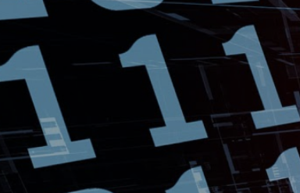10593578
Random Quiz
Descripción
Test por Susanna Alsop, actualizado hace más de 1 año
Más
Menos

|
Creado por Susanna Alsop
hace alrededor de 7 años
|
|
Resumen del Recurso
Pregunta 1
Pregunta
What is a foreign key?
Respuesta
-
Field used to link one data table with another
-
A key which can be used in any country
-
A primary key which must be unique.
Pregunta 2
Pregunta
A crumb is half a byte (4 bits)
Respuesta
- True
- False
Pregunta 3
Pregunta
What is the clock speed?
Respuesta
-
The speed of your clock
-
The 'beat' at which the computer works to.
Pregunta 4
Pregunta
Clock speed is measured in gigahertz.
Respuesta
- True
- False
Pregunta 5
Pregunta
Bus Topology is when
Respuesta
-
All of the devices are connected to one cable which is called the backbone
-
There is one wire which connects all the computers together and data flows in 1 direction only
-
There is a central hub and a central server with a dedicated connection to each work station or device
Pregunta 6
Pregunta
Advantages of Bus Topology are that
Respuesta
-
If the line breaks then only one workstation will be affected
-
It is cheap
-
Not many data collisions
-
Quick and easy to set up
-
There is a limit no on cable length
Pregunta 7
Pregunta
Disadvantages of Bus Topology are that you could get data collisions, there is a limit on cable length, it is not suitable for networks with heavy traffic and if there is a break in the backbone the whole network fails
Respuesta
- True
- False
Pregunta 8
Pregunta
A nibble is [blank_start]4 bits[blank_end]
A megabyte is [blank_start]1,024 kilobytes[blank_end]
A crumb is [blank_start]2 bits[blank_end]
A gigabyte is [blank_start]1,024 megabytes[blank_end]
A byte is [blank_start]8 bits[blank_end]
A terabyte is [blank_start]1,024 gigabytes[blank_end]
A kilobyte is [blank_start]1,024 bytes[blank_end]
Respuesta
-
4 bits
-
2 bits
-
8 bits
-
1,024 bytes
-
1,024 megabytes
-
1,024 kilobytes
-
4 bits
-
2 bits
-
8 bits
-
1,024 megabytes
-
1,024 kilobytes
-
1,024 terabytes
-
1,024 bits
-
8 bits
-
12 bits
-
1,024 megabytes
-
1,024 terabytes
-
1,024 gigabytes
-
1,024 megabytes
-
1,024 bytes
-
1,024 gigabytes
Pregunta 9
Pregunta
What does CPU stand for?
Respuesta
-
Central Progressing Unit
-
Central Processing Unit
-
Central Programming Unit
Pregunta 10
Pregunta
The CPU [blank_start]fetches information[blank_end], [blank_start]decodes[blank_end] and [blank_start]executes[blank_end] instructions.
Respuesta
-
fetches information
-
decodes
-
executes
Pregunta 11
Pregunta
The high speed memory attached to the CPU which we use to store data or instructions we use regularly to save processing time is called the what?
Respuesta
-
Core
-
RAM
-
Cache
-
ROM
¿Quieres crear tus propios Tests gratis con GoConqr? Más información.
